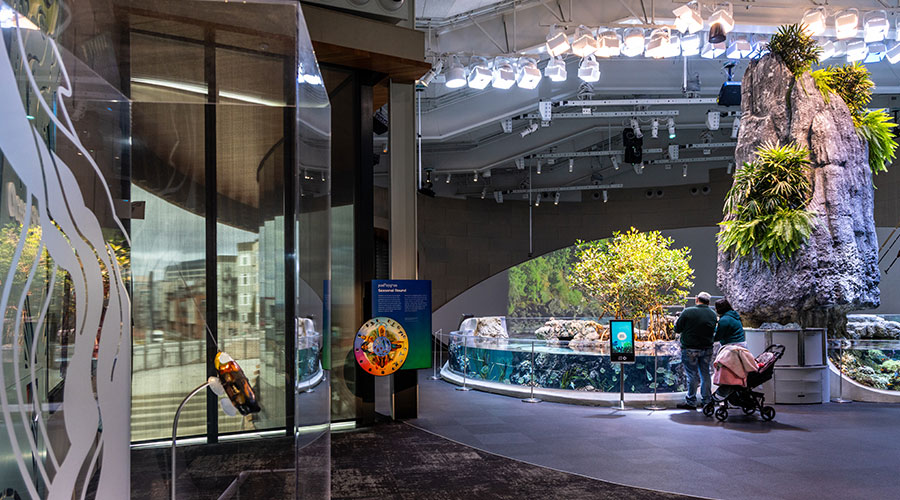Health Care, Lighting & EPAct
Tax deductions — and an extended deadline — can mean savings for managers who act now
Many health care organizations had been hastily planning to take advantage of tax incentives for investments in energy-efficient lighting and the requirements to qualify. Now, some of the pressure to develop and implement lighting projects has been relieved.
Congress recently extended the deadline for upgrading or installing new lighting systems for the commercial building tax deduction. The original deadline published in the Energy Policy Act of 2005 (EPAct) of Dec. 31, 2007, has been extended to Dec. 31, 2008.
As a result, engineering and maintenance managers have more time to investigate this opportunity and consult with their financial departments before proceeding with planning the technical aspects to determine if their facility will benefit.
Detailing the Deduction
Several points are important for managers to understand:
•The building must be located in the United States or its territories.
•The building must be privately owned. For buildings owned by federal, state or local governments or a political subdivision, the law states that the secretary of the treasury will create a regulation “to allow allocation of the deduction to the person primarily responsible for designing the property in lieu of the owner of such property. Such person will be treated as the taxpayer for purposes of this deduction.”
•The asset owner gets the deduction.
•The cost must be otherwise depreciable.
•The accelerated tax deduction is the lesser of: the complete cost of installing energy-efficient interior lighting; and $0.30-0.60 per square foot proportional to lighting power savings of 25-40 percent.
•The deduction is for the year the lighting system was upgraded or replaced in service.
Regulations are pending that will include detailed rules. For now, guidance is available in IRS Notice 2006-52 and the corrected version in IRS Bulletin 2006-26, June 26, 2006.
Selecting a Strategy
From a technical perspective, managers have two alternative paths to qualify lighting projects for the tax deduction. The first is to use the interim lighting rules, and the second is to use a whole-building or partial-deduction approach.
When only lighting is involved in the project, using the interim rules makes more sense. The whole-building approach will be most beneficial for projects that involve other building systems, such as HVAC system and envelope improvements. The partial-deduction approach is used when only one building system is affected.
The interim rules are in effect until the final regulations are published in the Federal Register, which is not expected until sometime late in 2008.
Qualifying projects must meet three requirements:
•Light levels must meet the minimum IESNA recommendations for the type of space.
•The lighting system must have lighting controls and must employ bi-level switching.
•The lighting power density must be reduced by at least 25 percent from values specified in a particular table in ASHRAE Standard 90.1-2001.
The project also must be certified to qualify by either a professional engineer or a licensed contractor.
Focus on Health Care
The light level recommendations for hospital and health care facilities can be found in the IESNA Publication RP-29, Lighting for Hospitals and HealthCare Facilities, or in the ninth edition of the IESNA Lighting Handbook.
ASHRAE 90.1-2001 requires that controls be added for any lighting alteration, which is defined as any project that involves more than 50 percent of the fixtures upgraded or replaced.
EPAct also requires bi-level switching. This switching arrangement also is called dual switching and is not defined in the interim rules. The National Electrical Manufacturers Association has defined this as “manual or automatic control (or a combination thereof) that provides two levels of lighting power in a space (not including off).
The whole-building approach uses a performance rating method (PRM) to determine the energy and power-cost reduction percentage of the proposed building, compared to a reference building that meets 90.1 minimum requirements.
Using this approach requires that the building achieve a 50 percent cost reduction compared to the baseline reference building performance. It provides a tax deduction up to $1.80 per square foot. HVAC, envelope, and lighting systems are given a deduction of $0.60 per square foot each for their contribution to the 50 percent savings.
The whole-building approach requires a high degree of systems integration and careful site selection and building orientation.
The partial-deduction approach allows for a partial deduction for the three major building systems — lighting, HVAC/water heating, and building envelope. IRS Notice 2006-52 states that 16.7 percent whole building savings are the system goal for each system.
The IRS decision of one-third split means 16.7 percent energy cost reduction for each system, or one-third of 50 percent. The one-third split targets might be hard to meet for lighting or envelope systems. This approach requires that the building be modeled using certified software that is listed on the U.S. Department of Energy web site.
Ballast Issues
EPAct05 also includes a previously passed ballast law that requires higher efficiency standards for T12 ballasts manufactured after Jan. 1, 2009, sold by manufacturers after Oct. 1, 2009, or installed in fixtures after July 1, 2010. The reason for the inclusion is to make the premium cost of T12 electronic ballasts unattractive, indirectly promoting T8 technology. The law does not affect T12 lamps.
After Jan. 1, 2008, manufacturers may not produce mercury-vapor lamp ballasts. This requirement was chosen as a practical means of increasing system efficiency by using energy-effective alternatives, such as metal halide or compact fluorescent (CFL), and phasing out low efficiency mercury-vapor technology. EPAct does not affect mercury-vapor lamps.
Specifying Systems
Managers should consider both retrofit products and new lighting fixtures for meeting the tax-deduction requirement for projects in health care facilities. Existing lighting systems that have quality fixtures can be retrofit with standard T8 or Super T8 lamps.
Managers should select ballasts based on ballast factor to provide the required light and that are considered extra-efficient. For applications that are not switched often, managers can use instant-start ballasts. For switching applications, such as occupancy sensors, they can use programmed-start ballasts for longer lamp life.
New lighting fixtures — including three-lamp T5 troffers and indirect fixtures using two-lamp T5 high-output — are good choices for providing quality office, waiting room and clinic environments.
Manufacturers also should focus on lighting products that make a permanent impact on reducing lighting energy. When new, low-wattage T8 lamps are used — 25-, 28-, or 30-watt — they can be replaced easily during relamping by standard 32-watt T8 lamps, eliminating the accrued savings.
For these spaces, the 40 percent reduction required to achieve a target power density of 0.78 watts per square foot and qualify for the $0.60 per square foot tax deduction is straightforward using commonly available products and well-established strategies and products including high-lumen F32 T8 lamps, high-efficiency electronic ballasts and high-performance fixtures, such as suspended indirect fixtures. Managers should remember to include the dual-switching requirement in these projects.
Consider smart fixtures — which include integral sensors — for locations where the fixture needs to be replaced and occupancy recognition is desired. Ideal locations include storage areas, bathrooms, and stairwells. In stairwells, managers can use the two-level option to ensure code-required light levels in the unoccupied, low-level state.
Managers also can replace incandescent fixtures, such as recessed downlights, or cans, with new CFL fixtures. Screw-base CFLs do not qualify for EPAct projects. Where dimming is required, CFL dimming ballasts are available that will dim to 3 percent at the low end. Dimming can help meet the bi-level requirement.
Additional ways to help meet the bi-level requirement include inboard/outboard switching arrangements for three or four-lamp fixtures, which usually requires two wall switches. A better alternative for inboard/outboard switching is to replace the two ballasts required for inboard/outboard switching with a step-dimming ballast wired to the same two wall switches.
When there is only one wall switch and three- or four-lamp fixtures are being retrofit, consider a bi-level ballast. This product only requires one wall-switch. The first operation of the wall switch turns all lamps. Flipping the switch down and back up switches the lamps to the lower setting. Use this method to save on the costly wiring is required when re-zoning and adding switches.
Additional Savings
Storage and warehouse spaces are ideal candidates for lighting upgrades. Selecting a lighting upgrade for warehouse spaces requires a 50 percent reduction – to 0.6 watts per square foot – to qualify for the deduction of $0.60 per square foot.
One-for-one replacements of existing high-intensity discharge (HID) lighting systems with high-bay fluorescent systems will require a thorough analysis, but these systems are easy to dual-switch, since the high-intensity fluorescent (HIF) fixtures have multiple ballasts. Fixture-mounted sensors can be used to meet the bi-level requirement.
Managers can replace 400-w standard MH systems mounted on 20-foot centers with either six-lamp T8 fixtures — 0.56 watts per square foot — or with four-lamp T5 HO fixtures — 0.59 watts per square foot. Either will qualify for the tax deduction. But for 400-w standard MH systems mounted on shorter centers, a new layout or a mix of four- and six-lamp fixtures will be needed to meet the requirement.
The time is right for planning strategic investments in lighting systems to obtain the benefits of the commercial building tax deduction and energy cost savings. The tax deduction and avoided energy cost savings will help pay for these improvements, but the real payoff will come in improved worker productivity.
John L. Fetters is president of Effective Lighting Solutions in Columbus, Ohio.
Related Topics:











